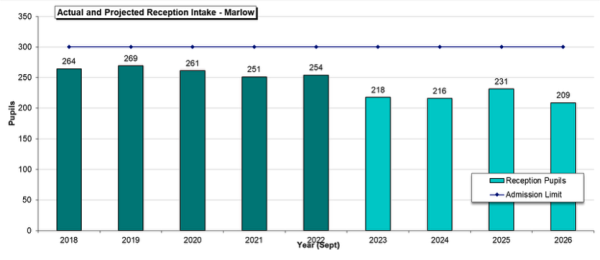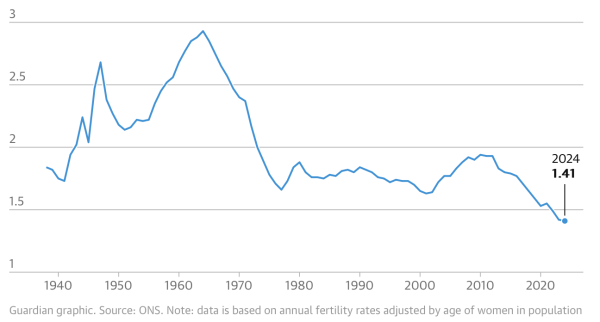Listening Period
Listening Period for the phased closure of St Peter's Catholic Primary School.
We are deeply proud of everything that St Peter's Catholic Primary School has achieved. For over a century it has been an important part of the community, and Ofsted recently praised the school for its ethos and approaches, as well as the children’s “impeccable behaviour”, and outcome and opportunities continue to strengthen.
Sadly, however, despite the hard work and efforts of so many people, the number of young people coming to school continues to drop as the local birthrate declines. This year our reception class is around a quarter of what it should be – and, given that schools are funded on the number of pupils that we have, this means we are in a very difficult financial position.
That is why, with a very heavy heart, the Secretary of State for Education and Directors of the St Thomas Catholic Academies Trust have made the hugely difficult decision to go through a phased closure of St Peter’s over the next two years.
The intention is that the school will remain open for the current Year 5s until July 2027, with all other year groups relocating to other schools in the summer of 2026.
As such, the Trust and the school is launching a listening period to understand the views of the community to the closure, and to understand how best we can support the community through this challenging time.
The listening period starts on 1 October and will conclude on Wednesday 6 November at 17:00pm.
Why is this decision being made?
- St Peter's has the capacity to welcome 210 children each day - which is 30 children in each year group.
- In 2022 there were 130 children in the school. It was operating at 62% capacity.
- As the table below shows, by the 2024/25 academic year there were 79 children on roll. This is because larger year groups reached the age to go to secondary school, and the number of children joining our Reception classes are much lower.
- At the start of this academic year (2025/26), there were 68 children in the school.
- If our Reception intake remains the same, by September 2027 there will be 57 children at the school. This means the school would be operating at 27% capacity.
- Schools are funded based on the number of children that are in the school. Even with significant changes to manage this lower number of children, the school would be close to £600,000 in deficit by the end of the 2027/28 academic year.

Will pupil numbers continue to drop?
- The number of children reaching Reception age in Marlow is projected to continue to decline. As the table below highlights, in 2019 there were nearly 270 children to fill the 300 Reception places in the town. This number has fallen to 231 children in 2025, and is due to drop further to 209 children in September 2026. This is a drop of nearly 25% in a relatively short space of time.
- There is limited building planned in the area to suggest that this trend will change.

- This is also a national trend. Just last month, the Office of National Statistics reported that fertility rates in 2024 fell to a record low with the average fertility rate being 1.41 children per female. This is the lowest rate since records began in 1938.

Are there other considerations?
The most import question is whether the school can continue to deliver the standards and aspirations that we have for the children and the community in this context.
- The team at St Peter’s school do an astonishing job. The children in the school are happy, safe and receive a high-quality education. However, a school that continues to decline in pupil numbers will become a school where the quality of education becomes difficult to deliver and the social development of children is more limited. The opportunities for the children would also become more and more limited as the proportion of funds we must spend on staffing and the building/operational needs becomes higher.
- In addition, the school building is in need of significant investment. Recent surveys have shown that over £1.75 million would be needed over the next five years to bring the school to modern standards. With between 50-60 children, and surplus capacity in other local schools, there is a question about whether this is the right use of public funds.
As part of this process, we have also explored:
- demand for the school and availability of places across the wider area
- the educational offer at the school
- transport and admissions implications
- the impact on the community
- alternatives to closure
The school's existing offer is strong. The declining birth rate means that, despite the positive outcomes and inspections, the number of children applying to the school continues to fall. In addition, there are significant surplus places in other schools - particularly in lower year groups. Also, all schools in the area are Good or better.
One important consideration was the availability of local Catholic education. However, baptism rates in the area are relatively low, and not every child who is baptised attends St Peter's.
This collectively means that the impact on transport and admissions in the area is also low.
The impact on the community is much harder to quantify. After over a century of service, the school is clearly an important part of a rich community. The building is used by a number of local people for various non-school related activities, but these are not enough to help support the school's financial future.
We have also looked at possible mergers, amalgamations, reducing the size of the school and a complete restructure. No option was deemed viable and in the long-term best interests of the children who go to the school.
What is this listening period intended to achieve?
Following extensive conversations with the Department for Education and the Local Authority, the Secretary of State for Education and Directors of the St Thomas Catholic Academies Trust have made the hugely difficult decision to go through a phased closure of St Peter’s over the next two years.
This listening period is to provide an opportunity for the community to share their views on this decision and, crucially, help us shape what the school and Trust can do to support the community between now and the end of the academic year in 2027.
How do I share my views?
To complete a response, please click here
Frequently Asked Questions from the Listening Period
Why does the consultation material say that there are 210 spaces at St Peter’s when the Pupil Admission Number is 15 – meaning the school has the capacity for 105?
The school was built to be a single form entry primary. This means that there is enough space for 30 children in each year group. There should be one full class in each year.
Because of falling numbers, a few years ago we reduced the Pupil Admissions Number (PAN) to 15 – meaning each September we can welcome 15 children into our Reception class. By reducing the PAN, it means that we can have two year groups in one class of 30 children.
It was hoped that this would be a temporary measure, but numbers have continued to decline. If we stayed open and followed the trend that we are on, by the 2027/28 academic year six of the seven year groups in the school would have 10 or less children in.
That means that we would have between 50 and 60 children in a building that should have 210 in it. Furthermore, by 2030 it is projected that there will be around 45 children in the school.
We still have to use the school’s budget, which is determined by the Government on a per pupil basis, to maintain a building that will be four to five times bigger than we need it to be.
Therefore, it is correct to say that the building will be a quarter full.
How much money is needed to keep the school open for the next five years?
By the end of the 2027/28 academic year, it is projected that the school will have accumulated a deficit of £600,000, and this figure would grow by a minimum of £200,000 a year.
That means that in five years’ time, the deficit would be more than £1.2 million.
In addition, the building requires £1.75 million worth of work over a similar time period.
Can the Trust simply cover the cost?
The reality is that the Trust has already supported the school financially and through help with resources and staffing.
However, the above costs would effectively use the whole reserves of the Trust – and that is a fund that is meant to support the education of the thousands of young people who go to Catholic schools across the Diocese.
Can the deficit by fundraised?
There are two key considerations to this question:
-
At the heart of every decision has to be the education of the children. Can we continue to deliver the education that the children deserve with around 50 children? Our amazing staff are already going above and beyond, and we would be left in a position where we would be making so many reductions that we couldn’t maintain all the things that make St Peter’s the school that it is.For example, 50 children is less than two classes. Would parents choose to send their child to a school with Reception to Year 2 in one class, and Year 3 to Year 6 in another? Can we ask a teacher to continue to deliver the quality of lessons that they do currently when they are teaching three or four years groups in one class?
-
In addition, there is also a question of sustainability. Fundraising may help cover a shortfall in the short term, but we have to question whether such support is sustainable.
How many children need to join to keep the school open?
The reality is that we would need to ensure that there are 15 children per year group consistently to keep the school operational. This would mean that we would be operating at 50% of the capacity of the building.
As context, we haven’t reached 15 children in a year group since our current Year 6 joined us, and the birth rate has continued to drop since then.
Can the other Marlow schools reduce their intake so St Peter’s can stay open?
This is something that is out of our gift to control.
It is also important to recognise that there will be close to 100 surplus reception places in Marlow by 2027/28. There would have to be significant changes across many schools to make this happen.
Can St Peter’s become a school for children with additional needs?
This is a complex question that would need the approval of many stakeholders, and is ultimately a decision for the Local Authority.
Have all options been considered?
This is a decision that has been agonised over. Given that there are no other Catholic primaries in Marlow, a merger is challenging. Also, the future repair bill for the building makes a merger on the St Peter’s site impossible.
We have looked at multiple staffing models, concepts and ideas – none of which support the school educationally or financially.
Can there be support to help with transport to another Catholic school?
We would welcome any conversations to support children going to other Catholic schools – whether that be in our Diocese or at another school in a neighbouring Diocese.
Now that this information is public, we are actively looking at having discussions with local Catholic schools about ways we may make this happen.
What support will be put in place for children with their wellbeing?
Teachers are monitoring children carefully. If there are any concerns then we will be making support available.
If you have any concerns about your child, then please do get in touch.
How can a Catholic school be shut down?
It is predicted that 800 primary schools could close by 2029 due to the falling birthrate.
Sadly, as every school is funded on a per-pupil basis, schools of faith and no faith are having to make hugely difficult decisions if there is not parent demand for places.
Why can’t our children be guaranteed a place at another local school now so that they can stay until July?
The admissions process is managed by the Local Authority in line with the Admissions Code.
We wholly understand why there is frustration that school closure is not considered as part of that Admissions Code. We are actively working with the LA and other Catholic schools to explore all options.
Why is our school the one to close? Why not another school in the area?
All local schools are Good or better, and our school is the one with the most surplus places.
Is the school a freehold property belonging to the diocese? Can it be used for other good purposes – such as an extension to the Pugin rooms and/or part used for special needs children?
The building belongs to the Diocese. Once the school has closed its doors for the final time in 2027, it will be passed back to the Diocese who will then determine how it should be used in the future.
What will happen to the money if the building is sold?
If the building is sold, any funds generated will go directly to the Diocese, not the Academy Trust. It will then be for the Diocese to determine how best to use those funds to support its charitable objectives.
What will happen to the time capsule and other mementos in the school?
The school has a rich history – and nobody wants that to be forgotten. Over the coming months we will be working with our children, parents, staff and Parish community to look at ways to ensure that we mark the positive impact that the school has had.
Who will have control of the Facebook page after the school has closed? Can we have access to help organise reunions and gatherings?
There are lots of complexities about handing over control of a Facebook page that has lots of images of children etc on it. However, when the time is right, there will be opportunity for people to establish a similar group and for us to promote that group on the school’s current Facebook page.
Has this process been carried out legally?
This process to reach this decision has been robust and follows the process outlined by the Department for Education for academies.
Is there an opportunity for the parish to play a greater role in supporting the school?
The parish has, and continues to be, a fantastic source of support.
This is a much broader question about sustainability than short term support. Alongside the significant costs already outlined, the key issue is that more children are needed – and all indications are that birthrates will continue to drop.
Will you cover the cost of uniform when the children move to new schools?
This is something we are actively looking at as part of the listening period.
 St Peter's Catholic
St Peter's Catholic